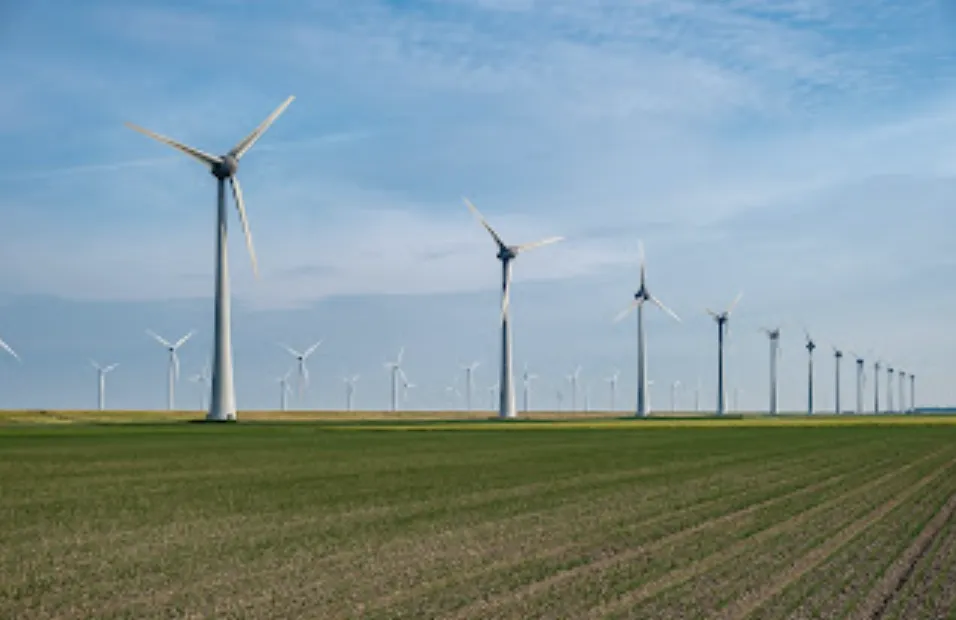October 4, 2024
Renewables helped some states breeze through this summer's punishing heat and energy demands
By Katherine Blunt and Jennifer Hiller of The Wall Street Journal

Renewable energy has helped some states meet or exceed energy needs. (Adobe Stock photo)
This summer's extreme heat forced energy operators to rely on solar and wind electricity to keep the U.S. grid humming, even as Americans "cranked their air conditioning," report Katherine Blunt and Jennifer Hiller of The Wall Street Journal. "Extreme heat pushed electricity demand to new highs . . . . States such as California and Texas that in recent years have bet big on renewable energy and battery storage easily met electricity demand."
California and Texas residents in some areas had "experienced rolling blackouts in 2020 and 2021, respectively. In 2022, grid operators in both states called on residents to conserve electricity during extremely hot weather and almost resorted to rolling blackouts as supply margins shrank," the Journal reports. "Since then, California. . . has built one of the world’s largest fleets of batteries that store solar power during the day and discharge it in the evening. Texas, meanwhile, now rivals California in storage capacity."
Even during this summer's extreme heat, the flow of energy in California was markedly different. "As extreme heat blanketed much of the West this summer, regional power demand reached a record high of nearly 168,000 megawatts on July 10," Blunt and Hiller explain. "Yet California, which has historically imported large amounts of electricity from other states during heat waves, had surplus to send elsewhere. . . . Temperatures also surged in Texas, [where] there was plenty of solar to meet peak demand around 4 p.m. to 5 p.m., and adequate wind power in the evening."
States that don't yet house the energy storage of Texas or California have tighter margins to manage. "Lanny Nickell, chief operating officer of the Southwest Power Pool, which operates part of the grid and a regional power market stretching from the Texas Panhandle to North Dakota, said his organization this summer had its smallest-ever seasonal cushion of electricity reserves," the Journal reports. "He said it is working to encourage investments in a range of new resources, as well as new means of importing power from other areas when supplies are tight."